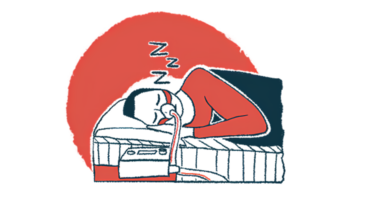At-home Exercise May Improve Bone Health in PWS Children, Trial Shows

An exercise intervention program can improve bone health in children with Prader-Willi syndrome (PWS) and potentially lower the risk of osteoporosis later in life, a six-month clinical trial shows.
While improvements were reported in only some bones, and not in markers of bone turnover, researchers believe that longer intervention strategies and more frequent bone strengthening exercises may further improve bone health in these patients.
The study, “A 24-Week Physical Activity Intervention Increases Bone Mineral Content without Changes in Bone Markers in Youth with PWS,” was published in the journal Genes.
Children and adults with PWS are known to have low bone mineral density (BMD), which makes them more prone to have weak and brittle bones later in life, and an increased risk of fractures. A number of factors is thought to contribute to low bone health in PWS, including reduced physical activity.
Exercise that applies strain to the bone is associated with bone strength and growth during childhood. If children fail to engage in enough of such exercises during their development, they will likely have insufficient bone formation.
“The general consensus is that PA [physical activity] is associated with bone accrual and bone strength during childhood but the exact duration and intensity required are yet to be determined,” the researchers wrote.
In a prior clinical trial (NCT02058342), researchers at the California State University and University of Florida investigated whether a home-based exercise program could increase the amount of physical activity and health-related outcomes.
The trial included 111 patients: 45 with PWS (mean age 10) and 66 obese patients without PWS. Participants were randomized to either an intervention group or a no exercise group over a 24-week period, nearly six months.
Over that period, participants in the intervention group underwent four exercise sessions each week, including one session of resistance exercises using body weight and jumping, one session of playground-based games including running and jumping — activities requiring coordination and balance — and two sessions of interactive Nintendo Wii fitness games — Wii Fit Plus and Just Dance 2 or 3. Each session lasted 25 to more than 45 minutes, and parents received phone or email support throughout the study.
Initial results showed that PWS patients in the intervention group practiced more physical activity than controls, including moderate to vigorous exercise. This was accompanied by reductions in body mass index and body fat, as well as increases in quality of life.
Researchers now examined whether this exercise intervention also improved bone health in PWS and obese patients. They measured BMD, bone mineral content (BMC), and blood markers of bone degradation both before and after the six-month intervention in multiple bones.
Overall, data were available for 28 PWS patients and 52 obese children. Before initiating the exercise program, those with PWS had lower BMC and BMD in the hip and femur (the thigh bone) than obese patients.
Control and exercise groups were also significantly different in terms of height, spine BMD, and total body (minus head) BMC. As such, the researchers accounted for all these differences when conducting statistical analyses.
Results showed that all groups — PWS and obese, intervention and controls — experienced increases in hip BMD and BMC, in femur BMC, and in total body BMC. Obese patients also experienced increases in spinal BMC, regardless of whether they received the exercise intervention.
In PWS patients, the intervention significantly improved hip BMD compared to PWS controls. In addition, spine BMC increased with the intervention in PWS patients, but showed no changes in controls.
“Likely, the novelty of the intervention exercises for those with PWS contributed to gains in spine BMC beyond growth,” the scientists wrote.
In turn, obese participants experienced hip and spinal BMD improvements with the intervention compared to controls also without PWS.
No changes were seen in the levels of blood bone degradation markers, such as bone-specific alkaline phosphatase and C-terminal telopeptide of type I collagen.
Overall, improvements were small, which suggests that longer approaches or more frequent bone-directed exercises could bring further benefits, said the investigators.
“Future studies aiming to improve bone health in PWS should consider longer intervention strategies that first built upon muscular strength, agility, and dynamic balance that will allow for completion of targeted exercises of higher impact for the bone,” they concluded.






